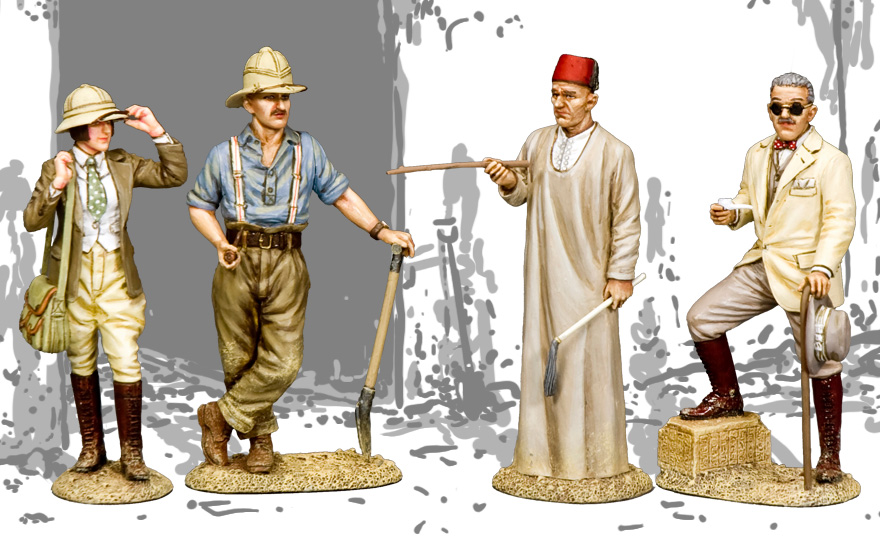Discovering Tutankhamun
The first goal of collecting toy soldiers is to have fun and King and Country understood that quite well. So even if they gave themselves rules to follow in their collections, they will still cheat those rules once in a while to add a fun piece that otherwise would not exist. Such is the case with the recent AE086 - Discovering Tutankhamun set.
Since its beginnings, the Ancient Egypt collection by King and Country usually depicts life as it was in Egypt, from somewhere during the Middle Kingdom (2040 to 1782 BC) to the fall of Cleopatra VII (30 BC). Despite covering many years of history, the fashion did not change much during that time, making all pieces more or less compatible. At least, such were the things before the arrival of the AE086.
This new set brings us back in late 1922, when Tutankhamun’s tomb was rediscovered. So despite being related to Ancient Egypt, this is no longer the usual time period covered by this collection. Included in this set are four figures associated with the rediscovery of this pharaoh’s tomb.
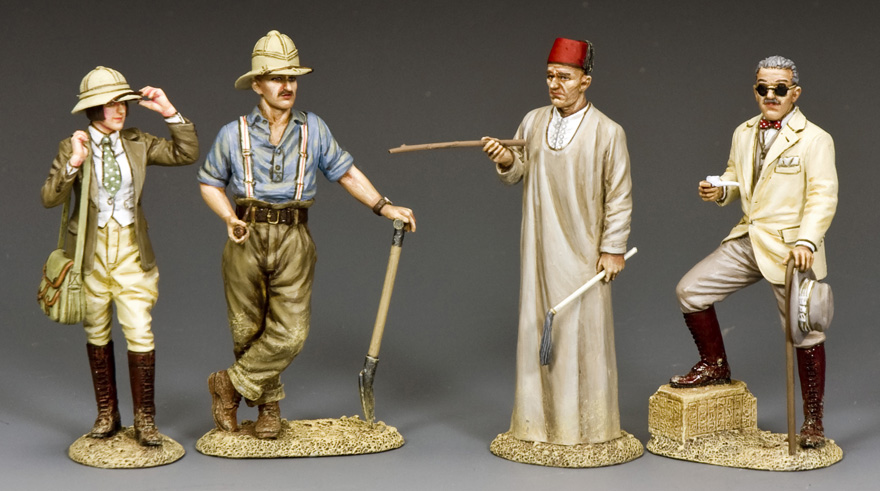
The most important one is probably Howard Carter, the archeologist who found the tomb. He is depicted here with a pith helmet, one hand resting on a shovel while the other one holds a tobacco pipe. He was known to be a loner and sometimes awkward to frequent. However, he was dedicated to his work and known to use the most modern archeology methods when excavating.
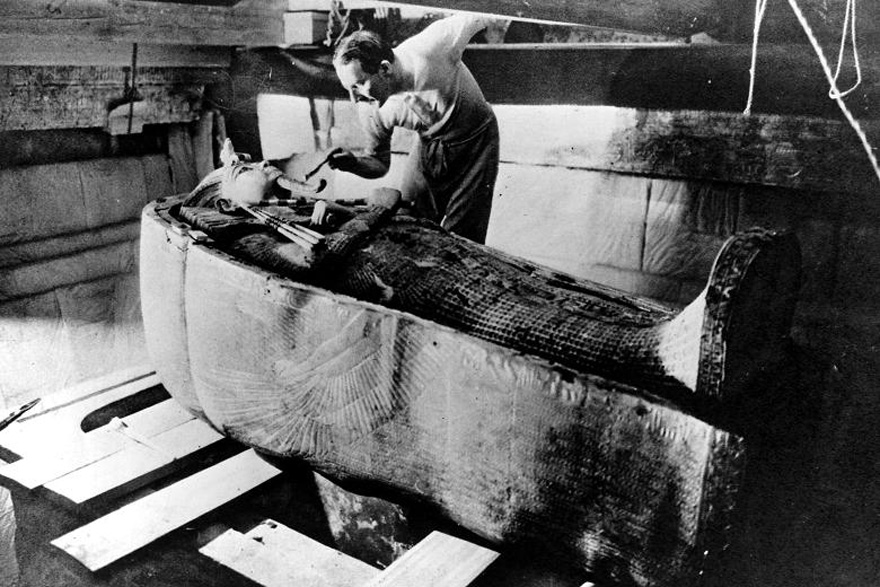
Howard Carter (1874-1939) and Tutankhamun, almost face to face.
The second important figure is George Edward Stanhope Molyneux Herbert, 5th Earl of Carnarvon (or Lord Carnarvon for short). He is represented here with shades on his eyes, a cane and a white tobacco pipe. His right foot is casually resting on some precious artifact. This rich English aristocrat was the one financing the whole excavation project. Therefore, he was one of the firsts to be informed of the discovery. On November 4th 1922, the same day the tomb was found, Lord Carnarvon received a telegram from Carter saying: "At last we have made wonderful discovery in Valley; a magnificent tomb with seals intact; re-covered same for your arrival; congratulations". On November 24th, Lord Carnarvon arrived at the excavation site with his daughter, Lady Evelyn Herbert.
Lady Evelyn Herbert is the third figure in this set. She was familiar with the Egyptian world as she and her father were often visiting the country to purchase antiques for their private collection. She is said to be the first to enter the burial chamber when she made an unauthorized visit to the site on November 26th with Carter and his assistant. Being the smallest of the group, she was the one able to fit in a hole found on the sealed doorway. Rumors circulated saying that she and Carter had an affair, but Lady Evelyn dismissed those saying: "at first I was in awe of him, later I was rather frightened of him".
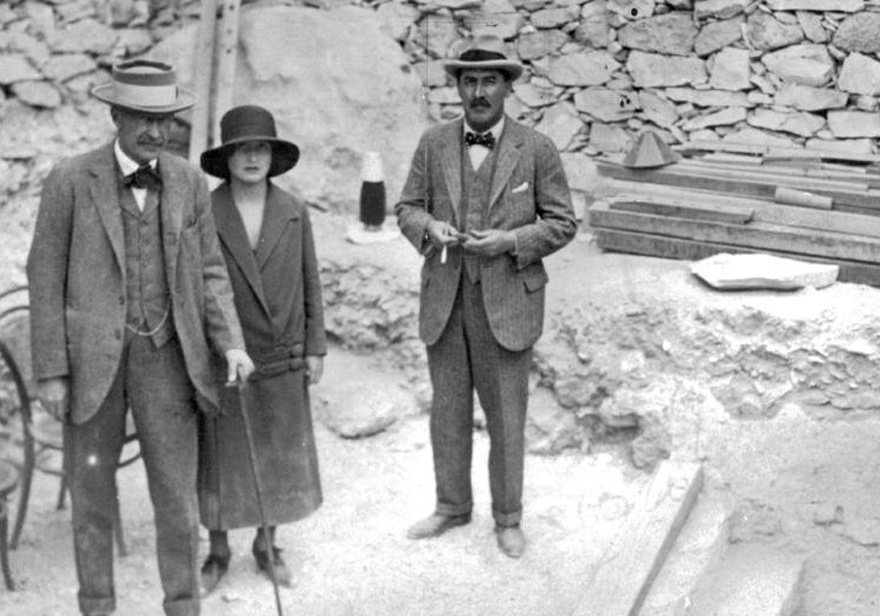
From left to right: Lord Carnarvon (1866-1923), Lady Herbert (1901-1980) and Howard Carter.
The last figure in this set depicts Dr. Selim Hassan. He might not be an important actor in the rediscovery of the tomb on November 4th 1922, but he greatly studied the tomb shortly later and helped a lot to understand better this specific tomb. Dr. Hassan also represents a transition phase in egyptology. Since its beginning during the rediscovery of Egypt during the Napoleonic wars, this new archeological science was led by European scholars. But Dr Selim Hassan became a leading expert in this domain and was also the first native Egyptian to be appointed Professor of Egyptology at the University of Cairo. This marks the starting of a new era where modern Egyptians began to be in charge of their own past. So he definitely has his place in this set. He is represented here with a traditional Egyptian garb, holding a fly-whisk.

Dr. Selim Hassan at the fourth pyramid.
When it comes to the visual look of those characters compared to the real ones, some differences might be noted. Lady Herbert was usually dressed as a lady and not as an explorer. Still it might be possible that she dressed up like this once in a while, but her overall look seems to be inspired by the 2016 TV series Tutankhamun. Like the resulting figure is beautiful and works well with the rest of the group, this makes this artistic liberty totally valid. Dr Selim Hassan was also most of the time wearing European clothes as it was almost mandatory to be taken seriously by European peers of the time. However, this version with traditional clothes helps to illustrate a transition that would be otherwise impossible to see.

The 2016 TV series Tutankhamun with Sam Neill, Amy Wren and Max Irons.
The group of figures from the AE086 is designed to go along with the AE088 - Tutankhamun’s Mummy. Their resting and talking poses suddenly make more sense when they are grouped around a centerpiece like this. All together, those two sets make a nice combo of pieces for a small diorama.
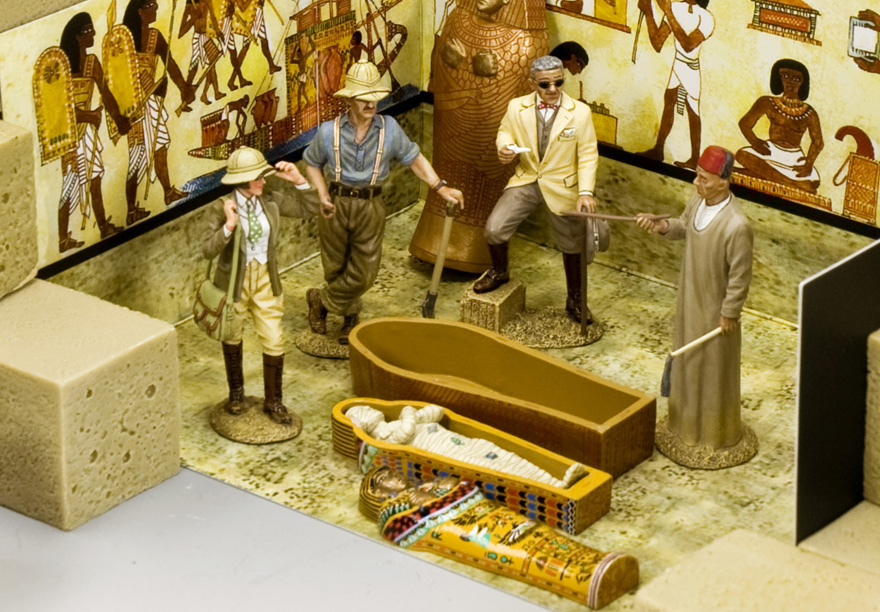
The AE088 - Tutankhamun’s Mummy here can be used
as much with the true Ancient Egypt collection as with the modern Ancient Egypt.
To conclude, this set includes the four most important characters linked to the rediscovery and understanding of Tutankhamun’s tomb. Those figures might not blend well with the rest of the Ancient Egypt collection, but they surely have their place there. Plus King and Country announced that they might add even more figures to go with those modern explorers. I now leave you with this old SNL classic about King Tut as it shows the importance of keeping things fun even if this messes a bit with the timeline and accuracies. But first, happy New Year 2022 and don’t forget to celebrate the 100th anniversary of the rediscovery of Tutankhamun’s tomb!

 Français
Français
